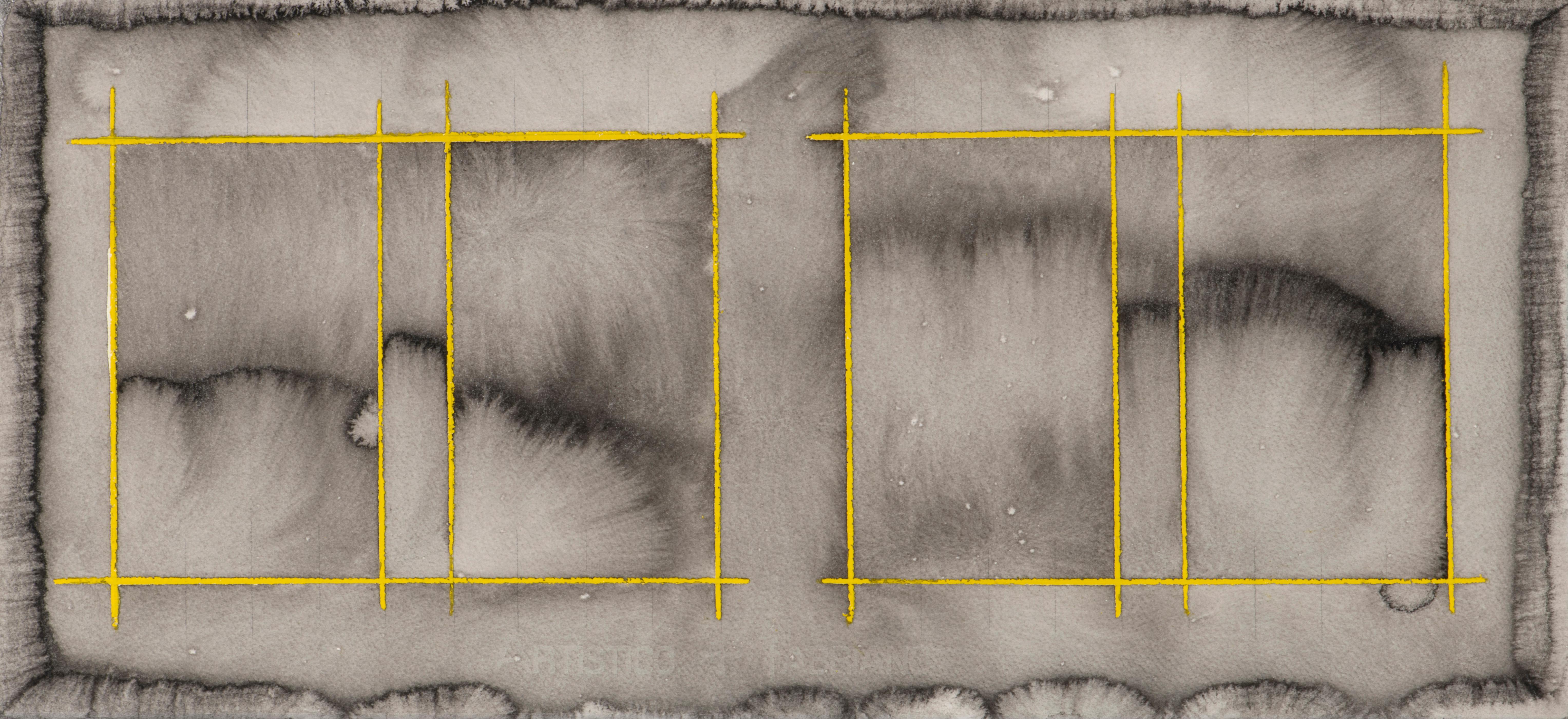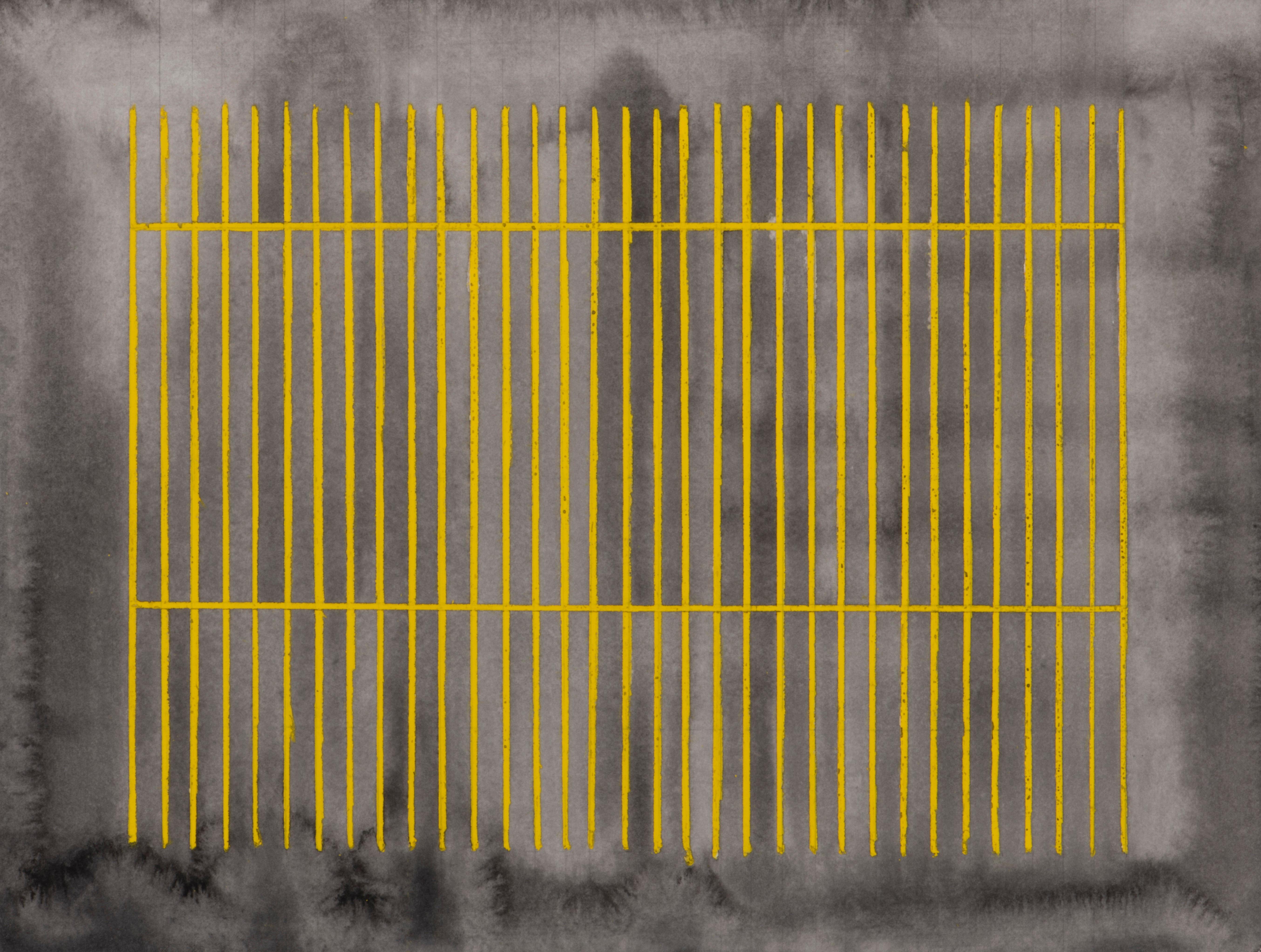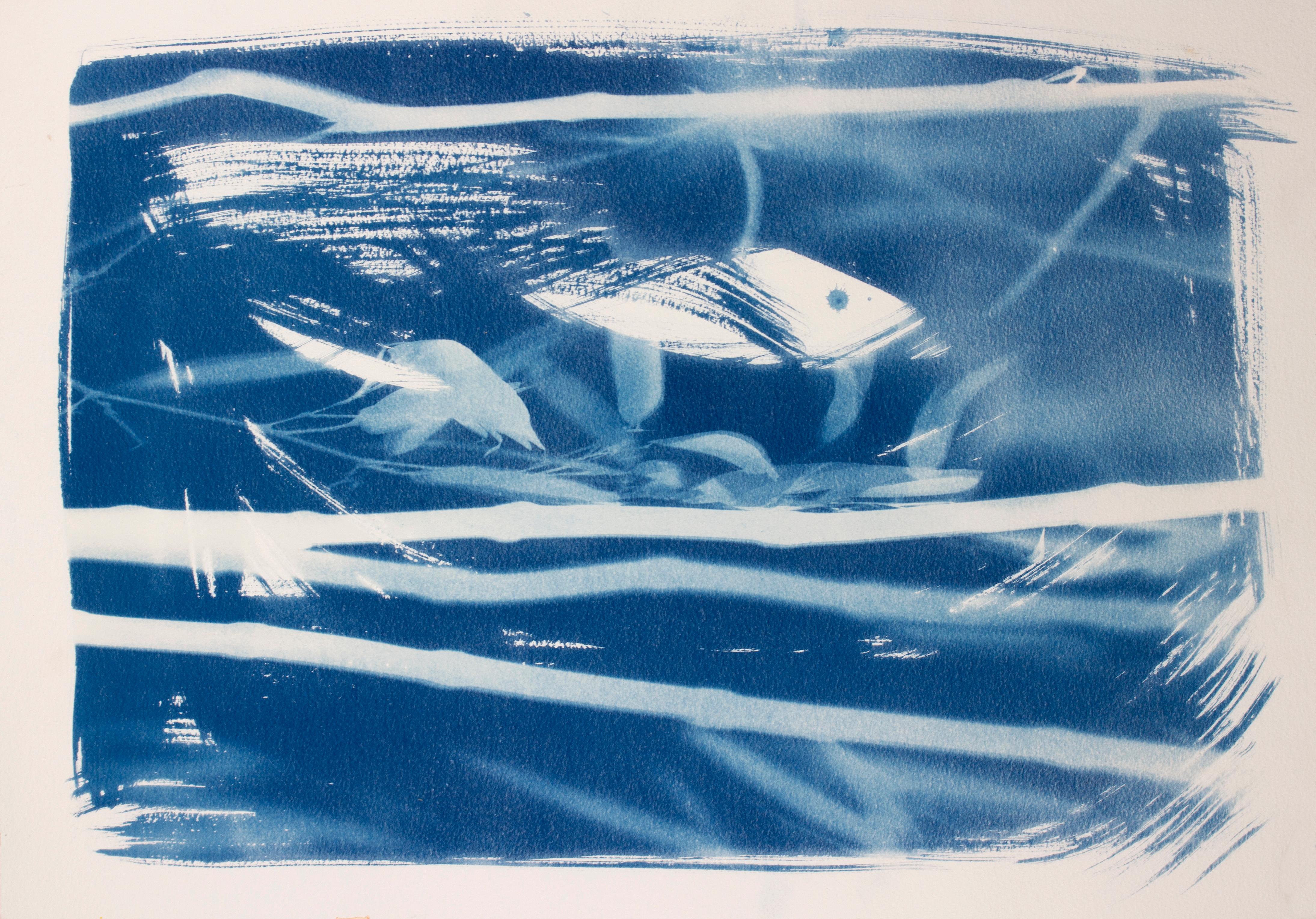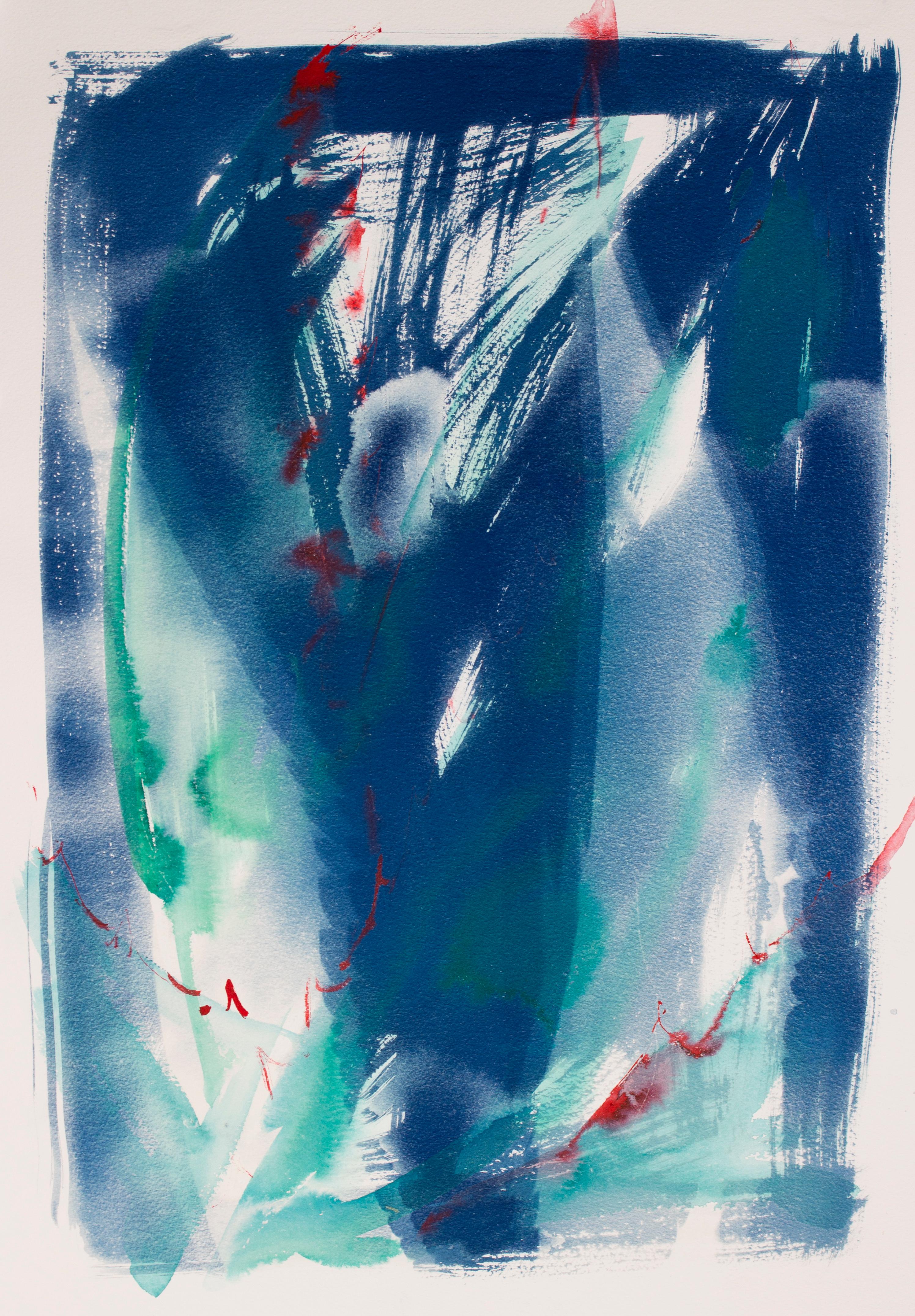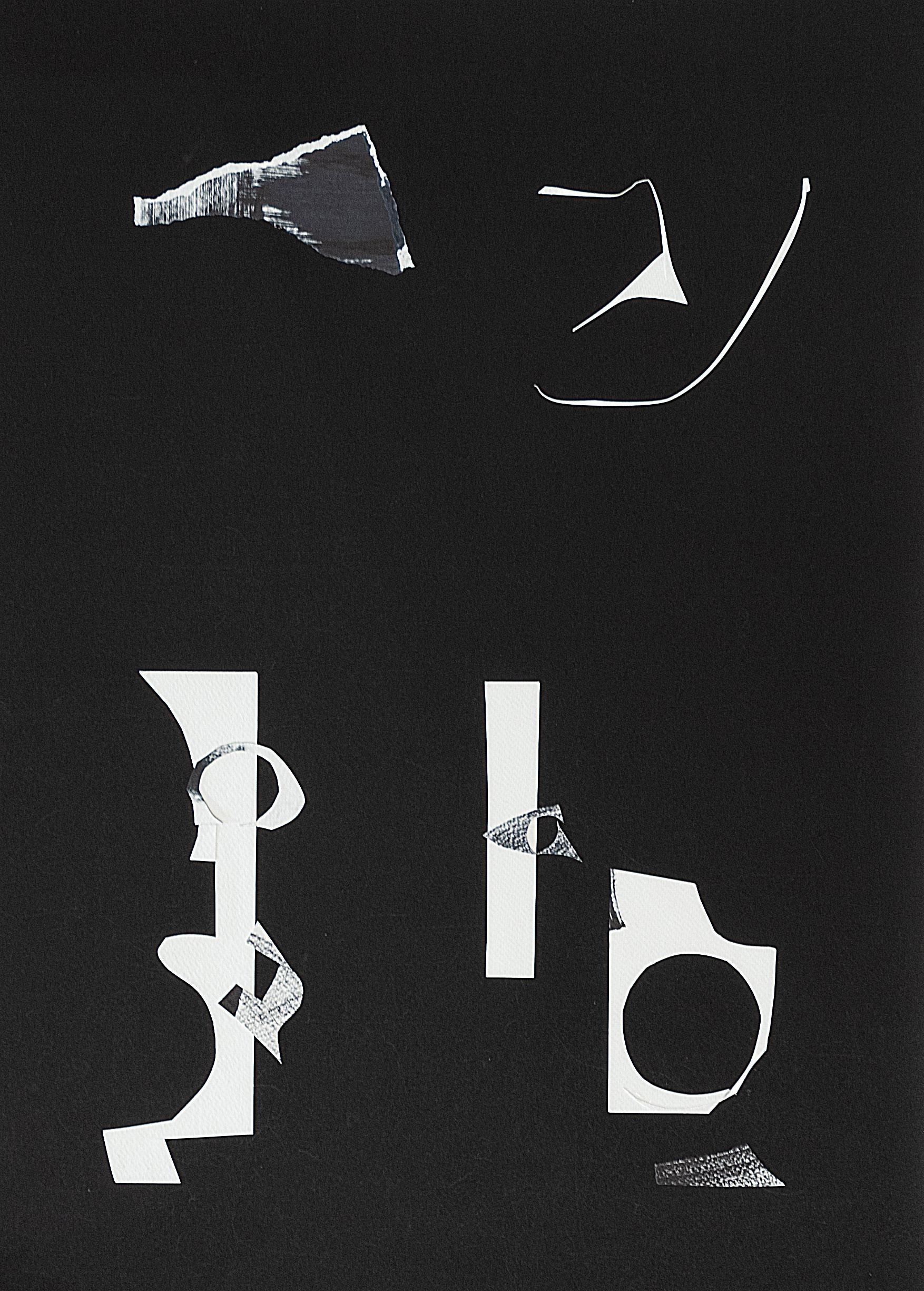Items Similar to Untitled
Want more images or videos?
Request additional images or videos from the seller
1 of 9
Roland AyersUntitled1982
1982
About the Item
Roland Ayers (1932-2017). Untitled, 1983. Ink on paper, measures 17 x 23 inches. Unframed and unmounted. Signed and dated lower left. Ayers holds the distinction of having participated in the first important survey of African-Americans, Contemporary Black Artists in America, a 1971 show at The Whitney.
Biography:
Artist and art educator, Roland Ayers was born on July 2, 1932, the only child of Alice and Lorenzo Ayers, and grew up in the Germantown district of Philadelphia. Ayers served in the US Army (stationed in Germany) before studying at the Philadelphia College of Art (currently University of the Arts). He graduated with a BFA in Art Education, 1954. He traveled Europe 1966-67, spending time in Amsterdam and Greece in particular. During this period, he drifted away from painting to focus on linear figurative drawings of a surreal nature. His return home inaugurated the artist’s most prolific and inspired period (1968-1975). Shorty before his second major trip abroad in 1971-72 to West Africa, Ayers began to focus on African themes, and African American figures populated his work almost exclusively.
In spite of Ayers’ travel and exploration of the world, he gravitated back to his beloved Germantown, a place he endowed with mythological qualities in his work and literature. His auto-biographical writing focuses on the importance of place during his childhood. Ayers’ journals meticulously document the ethnic and cultural make-up of Germantown, and tell a compelling story of class marginalization that brought together poor families despite racial differences. The distinctive look and design of Germantown inform Ayers’ visual vocabulary. It is a setting with distinctive Gothic Revival architecture and haunting natural beauty. These characteristics are translated and recur in the artist’s imagery.
During his childhood, one of the only books in the Ayers household was an illustrated Bible. The images within had a profound effect on the themes and subjects that would appear in his adult work. Figures in an Ayers’ drawing often seem trapped in a narrative of loss and redemption. Powerful women loom large in the drawings: they suggest the female role models his journals record in early life. The drawings can sometimes convey a strong sense of conflict, and at other times, harmony. Nature and architecture seem to have an antagonistic relationship that is, ironically, symbiotic.
A critical turning point in the artist’s career came in 1971 when he was included in the extremely controversial Whitney Museum show, Contemporary Black Artists in America. The exhibition gave Ayers an international audience and served as a calling card for introductions he would soon make in Europe.
Ayers is a particularly compelling figure in a period when black artists struggled with the idea of authenticity. A questioned often asked was “Is your work too black, or not black enough?” Abstractionists were considered by some peers to be sell-outs, frauds or worse. Figurative* work was accused of being either sentimental or politically radical depending on the critical source. Ayers made the choice early on to be a figurative artist, but considered his work devoid of political content.
Organizations such as Chicago’ s Afri-Cobra in the late 1960‘s asserted that the only true black art of any relevance must depict the black man and woman. A martial agenda of this nature trivialized the work in Ayers’ view. A devotee of Eastern religions, Ayers sought to explore deeper subjects of a less topical nature, thereby stepping outside political discourse. This is not to suggest that he was a man who rejected the physical world. He was profoundly interested in awareness of our environment, and how it relates to self-awareness. He often spoke of universality and timelessness as qualities to strive for in his art.
Roland Ayers: In His Own Words
…A person who refuses or is unable to give into the general consensus of his or her society may retain the capacity to see the world in a vastly different way. That person, in addition to having his or her personal construct of the world — and we all have that — usually has also retained the capacity to be more aware of that unique way of seeing as well as to use it.
… (my work) oftentimes reveals my fragmented consciousness: full of dream states and visions concerning one-world-togetherness: bits and pieces of primal religiosity that point to Europe as much as it does Africa; Afro-American cultural imagery, all presented up-front with an optimistic facade. However, there is another side: part of the dream as nightmare, simmering terrors underneath or just around the corner, ominous dark skies, lonely figures, fragmentary, confused thoughts on being black in the dark, cavernous belly of America, curses and cries in the night. I cannot always decide which story the finished product illuminates: an upbeat optimist or a frustrated, lonely pessimist. Or both at once: Gemini-like, each facing his own way, one foot planted in the West, the other in the East.
Selected Solo Exhibitions:
1962 The Philadelphia Art Alliance Everyman’s Gallery, Philadelphia, PA
1963 Socrates Perakis Gallery, Philadelphia, PA
1968 Socrates Perakis Gallery, Philadelphia, PA
1973 The Studio Museum in Harlem, New York, NY
1975 Gallery 3 1/2 & Four, Philadelphia PA
1977 “Drawing Retrospective” Woodmere Gallery. Philadelphia, PA
Selected Group Exhibitions:
1961 PAFA 156th Annual Exhibition, Philadelphia, PA
1964 PAFA, Invitational Regional Exhibition, Philadelphia, PA
1964 National Academy of Design, 139th Annual, New York, NY
1964 “Fifth Ultimate Concerns” Ohio University Gallery, Athens OH
1964 Water Colors, USA”Missouri Museum of Art, Springfield MO
1968 “All Kinds of People”, Washington Gallery of Modern Art, Washington, DC
1969 PAFA 164th Annual Exhibition, Philadelphia, PA
1969 “Afro-American Artists 1800-1969” Civic Center Museum, Philadelphia PA
1970 “Sixth Annual Small Sculpture & Drawing Show” Ball State University, Muncie IN
1971 “Recent Acquisitions”, Philadelphia Museum of Art, Philadelphia PA
1971 University of Pittsburgh, (Exhibition sponsored by the Black Action Society)
Biennial Festival, Pittsburgh PA
1971 “Contemporary Black Artists in America”, Whitney Museum of Art, New York, NY
1973 “Blackness USA 1973”: New York Cultural Center, New York, NY
1974 “Contemporary Drawing” Glassboro State Teachers College, Glassboro, NJ
1974 Second Regional Show for the World and Black African Festival of Art & Culture
(Festac) University of Pennsylvania Museum, Philadelphia PA
1975-76 “Jubilee…Afro-American Artists on Afro-America”, Museum of Fine Arts, Boston
1978 “Paper Works,” The Drawing Center, New York, NY
1978 “Facets of Our Experiences”, Afro-American Historical & Cultural Museum,
Philadelphia, PA.
Collections:
Afro-American Historical & Cultural Museum, Philadelphia PA
American Foundation for Negro Affairs, Philadelphia PA
Bibliotheque Royale de Belique, Brussels, Belgium
Budd Company of Philadelphia
Community College of Philadelphia
Concertgebow “de Doelen,” Graphics collection, Rotterdam, Netherlands
Mr. Elden Erickson, former U.S. Consul Gereral, Rotterdam, Netherlands
First Pennsylvania Bank, Philadelphia PA
New York City Health & Hospital Corporation, New York, NY
Philadelphia Free Library, collection of prints & Drawings
Studio Museum In Harlem, New York, NY
- Creator:Roland Ayers (1932 - 2014, American)
- Creation Year:1982
- Dimensions:Height: 19 in (48.26 cm)Width: 23 in (58.42 cm)
- Medium:
- Movement & Style:
- Period:
- Condition:
- Gallery Location:Wilton Manors, FL
- Reference Number:1stDibs: LU24529794992
About the Seller
4.9
Gold Seller
These expertly vetted sellers are highly rated and consistently exceed customer expectations.
Established in 2007
1stDibs seller since 2015
325 sales on 1stDibs
Typical response time: 9 hours
- ShippingRetrieving quote...Ships From: Wilton Manors, FL
- Return PolicyA return for this item may be initiated within 7 days of delivery.
More From This SellerView All
- Improvisation abstract African-American artist painting.By Roland AyersLocated in Wilton Manors, FLRoland Ayers (1932-2017). Improvisation, 2nd Series, #5. Ink on paper, measures 19 x 24 inches. Unframed and unmounted. Signed and dated lower right, titled lower left. There are a f...Category
1980s Abstract Abstract Paintings
MaterialsPaper, Ink
- Coronel Retirado y Su Amante Esposa (Cuban Artist)By Felipe OrlandoLocated in Wilton Manors, FLFelipe Orlando (Cuban-Mexican, 1911-2001). Coronel Retirado y su Amante Esposa, ca. 1970. Ink and gouache on paper with heavily built up layers of textured ground. Measures 13 1/4 x 18 3/8 inches. Signed lower left. Original label affixed on verso. Excellent condition. Unframed. An anthropologist as well as a painter and engraver, Orlando, whose full name was Felipe Orlando Garcia Murciano, studied at the University of Havana and at the painting workshop of Jorge Arche and Víctor Manuel. He was a founding member of the Asociación de Pintores y Escultores de Cuba (APEC) and a professor at the Universidad de las Américas and the Universidad Nacional Autónoma de México, both in Mexico City. His style is influenced by the Afro-Cuban movement and pre-columbian art...Category
1970s Abstract Abstract Paintings
MaterialsInk, Gouache
- Mallorca Spain (Spanish Mediterranean landscape)By James Floyd ClymerLocated in Wilton Manors, FLBeautiful abstract painting by American artist, James Floyd Clymer (1893-1982). Mallorca, ca.1930. Watercolor and pencil on paper measures 14 x 20 inches. Signed lower margin. Ships rolled with matting removed. James Floyd Clymer ( 1893-1982 ) known for his Regionalist style of land, sea and cityscapes, created paintings with an emphasis on color and form. His works possess a clear and simple style, easily understood by the masses. Born in Perkasie Pennsylvania, 20 miles north of Philadelphia, Clymer was the youngest of seven children. Losing his mother during childbirth, he was raised by his eldest sister. He attended Drexel University in Philadelphia, studying Art and Architecture and worked as an Architect in the years following World War I. During this time, Clymer met the artist Gwenyth Waugh, daughter of the renowned marine painter, Frederick Judd Waugh. His thrust then changed from Architect to Artist. Together, the couple travelled to destinations such as Spain and Newfoundland, where they gave birth to their only daughter. In the early 1920's, Clymer and family settled in Provincetown, MA and quickly became associated with notable artists such as Helen Sawyer, Edwin Dickinson and the Waughs. About 1940, Clymer moved to New York City, and in 1946, he and his family settled in a home on Schunnemunk Mountain in New York (close to Newburgh, New York, in the Hudson River Valley). He lived there until circa 1978, when he moved to his granddaughter's house near Schenectady, New York, where he later died. Clymer worked with ease in the mediums of watercolor and oil painting, much like James Fitzgerald...Category
Early 20th Century Abstract Abstract Paintings
MaterialsWatercolor, Rag Paper, Pencil
- Newfoundland Landscape (Canada)By James Floyd ClymerLocated in Wilton Manors, FLBeautiful abstract painting by American artist, James Floyd Clymer (1893-1982). Newfoundland, ca.1930. Watercolor and pencil on paper measures 14 x 20 inches. Signed lower margin. James Floyd Clymer ( 1893-1982 ) known for his Regionalist style of land, sea and cityscapes, created paintings with an emphasis on color and form. His works possess a clear and simple style, easily understood by the masses. Born in Perkasie Pennsylvania, 20 miles north of Philadelphia, Clymer was the youngest of seven children. Losing his mother during childbirth, he was raised by his eldest sister. He attended Drexel University in Philadelphia, studying Art and Architecture and worked as an Architect in the years following World War I. During this time, Clymer met the artist Gwenyth Waugh, daughter of the renowned marine painter, Frederick Judd Waugh. His thrust then changed from Architect to Artist. Together, the couple travelled to destinations such as Spain and Newfoundland, where they gave birth to their only daughter. In the early 1920's, Clymer and family settled in Provincetown, MA and quickly became associated with notable artists such as Helen Sawyer, Edwin Dickinson...Category
Early 20th Century Abstract Abstract Paintings
MaterialsWatercolor, Rag Paper, Pencil
- Newfoundland Landscape (Canada)By James Floyd ClymerLocated in Wilton Manors, FLBeautiful abstract painting by American artist, James Floyd Clymer (1893-1982). Newfoundland, ca.1930. Watercolor and pencil on paper measures 14 x 20 inches. Signed lower margin. James Floyd Clymer ( 1893-1982 ) known for his Regionalist style of land, sea and cityscapes, created paintings with an emphasis on color and form. His works possess a clear and simple style, easily understood by the masses. Born in Perkasie Pennsylvania, 20 miles north of Philadelphia, Clymer was the youngest of seven children. Losing his mother during childbirth, he was raised by his eldest sister. He attended Drexel University in Philadelphia, studying Art and Architecture and worked as an Architect in the years following World War I. During this time, Clymer met the artist Gwenyth Waugh, daughter of the renowned marine painter, Frederick Judd Waugh. His thrust then changed from Architect to Artist. Together, the couple travelled to destinations such as Spain and Newfoundland, where they gave birth to their only daughter. In the early 1920's, Clymer and family settled in Provincetown, MA and quickly became associated with notable artists such as Helen Sawyer, Edwin Dickinson...Category
Early 20th Century Abstract Abstract Paintings
MaterialsWatercolor, Rag Paper, Pencil
- Mallorca Spain (Spanish Mediterranean landscape)By James Floyd ClymerLocated in Wilton Manors, FLBeautiful abstract painting by American artist, James Floyd Clymer (1893-1982). Mallorca, ca.1930. Watercolor and pencil on paper measures 14 x 20 inches. Signed lower margin. Ships rolled with matting removed. James Floyd Clymer ( 1893-1982 ) known for his Regionalist style of land, sea and cityscapes, created paintings with an emphasis on color and form. His works possess a clear and simple style, easily understood by the masses. Born in Perkasie Pennsylvania, 20 miles north of Philadelphia, Clymer was the youngest of seven children. Losing his mother during childbirth, he was raised by his eldest sister. He attended Drexel University in Philadelphia, studying Art and Architecture and worked as an Architect in the years following World War I. During this time, Clymer met the artist Gwenyth Waugh, daughter of the renowned marine painter, Frederick Judd Waugh. His thrust then changed from Architect to Artist. Together, the couple travelled to destinations such as Spain and Newfoundland, where they gave birth to their only daughter. In the early 1920's, Clymer and family settled in Provincetown, MA and quickly became associated with notable artists such as Helen Sawyer, Edwin Dickinson...Category
Early 20th Century Abstract Abstract Paintings
MaterialsWatercolor, Rag Paper, Pencil
You May Also Like
- Untitled (Study for Līnea), 2021Located in Washington, DCPoured beeswax work by Mary Early from her "Study for Līnea" series. "The production, or “pouring,” of beeswax elements has become a meditative process that is integral to my art practice, serving as an observation of time, materials, and space. The raw beeswax I use has taken its form at the end of a long series of natural processes followed by a manufacturing process, and once it is in my hands, the studio becomes a factory. I apply my own methods of transforming the material by casting the beeswax into three-dimensional forms. Once I have fixed both a place and a time in the future for a potential installation, I begin to determine how the beeswax lines will take their aggregated shape in that space and, simultaneously, how many lines might be manufactured for that particular space in the amount of time available." Mary Early (born 1975, Washington, DC) lives and works in Washington, DC. She studied visual art, film, and video at Bennington College, and her work has been exhibited at the United States Botanic Garden, Washington Project for the Arts, the Corcoran Gallery of Art, Second Street Gallery (Charlottesville, VA), Hemphill Fine Arts (Washington DC,) the Austrian Cultural Forum (Washington DC), Galerie Im Ersten (Vienna, Austria), Kloster Schloss Salem (Salem, Germany), Kunstlerbund Tubingen (Tubingen, Germany), and the American University Museum (Washington DC) among other regional and national galleries. Her early work incorporated formed concrete, tarpaper and paraffin wax, fabricated wood structures, and, increasingly over the years, surfaces coated with wax as a method of preserving or concealing an object within. Recent works have relied solely on solid forms cast in wax, abandoning the use of any permanent armature. Temporary installations are guided by schematic drawings and plans, which then serve as a permanent record. In 2014 she exhibited her first large-scale installation of wax lines at Second Street Gallery in Charlottesville, VA, followed by temporary installations in response to various historical sites in Salem, Germany (2016) and Tubingen Germany (2017). In 2017 she participated in the exhibition “Twist-Layer-Pour” at the American University Museum, which included Untitled [Curve], an installation of thousands of beeswax lines assembled on the floor of the museum. In spring 2018 she was commissioned to create a temporary installation at the Sun Valley Center for the Arts, Sun Valley Idaho. This work took the form of two intersecting curtains of hanging beeswax lines bisecting a 12’ foot x 18’ foot room, providing an immersive and enclosed viewing space. Early’s work is included in the collections of the US Department of State/Embassy of Panama, Kimpton Hotels, and the District of Columbia Art Bank among other public and private collections. She is a recipient of the Artist Fellowship Grant from the DC Commission on Arts & Humanities, Washington DC (2020, 2019, 2018, 2017, 2016, 2015, 2014, 2011, 2009, 2007). Early is the director of HEMPHILL Fine Arts, Washington, DC, and serves on the boards of Hamiltonian Artists and Washington Sculptors Group. She handles the work of contemporary artists and artist estates, including the work of William Christenberry, Colby Caldwell, Hedieh Javanshir Ilchi, Linling Lu, Mingering Mike, Robin Rose, Renée Stout...Category
21st Century and Contemporary Abstract Geometric Abstract Paintings
MaterialsWax Crayon, Sumi Ink, Archival Paper, Graphite
- Untitled (Study for Līnea)Located in Washington, DCPoured beeswax work by Mary Early from her "Study for Līnea" series. "The production, or “pouring,” of beeswax elements has become a meditative process that is integral to my art practice, serving as an observation of time, materials, and space. The raw beeswax I use has taken its form at the end of a long series of natural processes followed by a manufacturing process, and once it is in my hands, the studio becomes a factory. I apply my own methods of transforming the material by casting the beeswax into three-dimensional forms. Once I have fixed both a place and a time in the future for a potential installation, I begin to determine how the beeswax lines will take their aggregated shape in that space and, simultaneously, how many lines might be manufactured for that particular space in the amount of time available." Mary Early (born 1975, Washington, DC) lives and works in Washington, DC. She studied visual art, film, and video at Bennington College, and her work has been exhibited at the United States Botanic Garden, Washington Project for the Arts, the Corcoran Gallery of Art, Second Street Gallery (Charlottesville, VA), Hemphill Fine Arts (Washington DC,) the Austrian Cultural Forum (Washington DC), Galerie Im Ersten (Vienna, Austria), Kloster Schloss Salem (Salem, Germany), Kunstlerbund Tubingen (Tubingen, Germany), and the American University Museum (Washington DC) among other regional and national galleries. Her early work incorporated formed concrete, tarpaper and paraffin wax, fabricated wood structures, and, increasingly over the years, surfaces coated with wax as a method of preserving or concealing an object within. Recent works have relied solely on solid forms cast in wax, abandoning the use of any permanent armature. Temporary installations are guided by schematic drawings and plans, which then serve as a permanent record. In 2014 she exhibited her first large-scale installation of wax lines at Second Street Gallery in Charlottesville, VA, followed by temporary installations in response to various historical sites in Salem, Germany (2016) and Tubingen Germany (2017). In 2017 she participated in the exhibition “Twist-Layer-Pour” at the American University Museum, which included Untitled [Curve], an installation of thousands of beeswax lines assembled on the floor of the museum. In spring 2018 she was commissioned to create a temporary installation at the Sun Valley Center for the Arts, Sun Valley Idaho. This work took the form of two intersecting curtains of hanging beeswax lines bisecting a 12’ foot x 18’ foot room, providing an immersive and enclosed viewing space. Early’s work is included in the collections of the US Department of State/Embassy of Panama, Kimpton Hotels, and the District of Columbia Art Bank among other public and private collections. She is a recipient of the Artist Fellowship Grant from the DC Commission on Arts & Humanities, Washington DC (2020, 2019, 2018, 2017, 2016, 2015, 2014, 2011, 2009, 2007). Early is the director of HEMPHILL Fine Arts, Washington, DC, and serves on the boards of Hamiltonian Artists and Washington Sculptors Group. She handles the work of contemporary artists and artist estates, including the work of William Christenberry, Colby Caldwell, Hedieh Javanshir Ilchi, Linling Lu, Mingering Mike, Robin Rose, Renée Stout...Category
21st Century and Contemporary Abstract Geometric Mixed Media
MaterialsWax Crayon, Sumi Ink, Archival Paper, Graphite
- Untitled (Study for Līnea)Located in Washington, DCPoured beeswax work by Mary Early from her "Study for Līnea" series. "The production, or “pouring,” of beeswax elements has become a meditative process that is integral to my art practice, serving as an observation of time, materials, and space. The raw beeswax I use has taken its form at the end of a long series of natural processes followed by a manufacturing process, and once it is in my hands, the studio becomes a factory. I apply my own methods of transforming the material by casting the beeswax into three-dimensional forms. Once I have fixed both a place and a time in the future for a potential installation, I begin to determine how the beeswax lines will take their aggregated shape in that space and, simultaneously, how many lines might be manufactured for that particular space in the amount of time available." Mary Early (born 1975, Washington, DC) lives and works in Washington, DC. She studied visual art, film, and video at Bennington College, and her work has been exhibited at the United States Botanic Garden, Washington Project for the Arts, the Corcoran Gallery of Art, Second Street Gallery (Charlottesville, VA), Hemphill Fine Arts (Washington DC,) the Austrian Cultural Forum (Washington DC), Galerie Im Ersten (Vienna, Austria), Kloster Schloss Salem (Salem, Germany), Kunstlerbund Tubingen (Tubingen, Germany), and the American University Museum (Washington DC) among other regional and national galleries. Her early work incorporated formed concrete, tarpaper and paraffin wax, fabricated wood structures, and, increasingly over the years, surfaces coated with wax as a method of preserving or concealing an object within. Recent works have relied solely on solid forms cast in wax, abandoning the use of any permanent armature. Temporary installations are guided by schematic drawings and plans, which then serve as a permanent record. In 2014 she exhibited her first large-scale installation of wax lines at Second Street Gallery in Charlottesville, VA, followed by temporary installations in response to various historical sites in Salem, Germany (2016) and Tubingen Germany (2017). In 2017 she participated in the exhibition “Twist-Layer-Pour” at the American University Museum, which included Untitled [Curve], an installation of thousands of beeswax lines assembled on the floor of the museum. In spring 2018 she was commissioned to create a temporary installation at the Sun Valley Center for the Arts, Sun Valley Idaho. This work took the form of two intersecting curtains of hanging beeswax lines bisecting a 12’ foot x 18’ foot room, providing an immersive and enclosed viewing space. Early’s work is included in the collections of the US Department of State/Embassy of Panama, Kimpton Hotels, and the District of Columbia Art Bank among other public and private collections. She is a recipient of the Artist Fellowship Grant from the DC Commission on Arts & Humanities, Washington DC (2020, 2019, 2018, 2017, 2016, 2015, 2014, 2011, 2009, 2007). Early is the director of HEMPHILL Fine Arts, Washington, DC, and serves on the boards of Hamiltonian Artists and Washington Sculptors Group. She handles the work of contemporary artists and artist estates, including the work of William Christenberry, Colby Caldwell, Hedieh Javanshir Ilchi, Linling Lu, Mingering Mike, Robin Rose, Renée Stout...Category
21st Century and Contemporary Abstract Geometric Abstract Paintings
MaterialsWax Crayon, Sumi Ink, Archival Paper, Graphite
- 'Pasadena Reflections'. Conceptual, botanical painting in blue and whiteBy Sophia MilliganLocated in Penzance, GB'Pasadena Reflections' Original Artwork Memories rise and float, tangled in the intangible shadows of time. 'Pasadena Reflections' captures an essence of the ephemeral and the end...Category
2010s Abstract Impressionist Abstract Paintings
MaterialsPaint, Paper, Ink, Mixed Media
- 'Soldier Protects The Queen'. Botanical environmental mixed media paintingBy Sophia MilliganLocated in Penzance, GB'Soldier Protects The Queen' Original Artwork, Unframed ______________________ The sculptural strength of the agave, holding proud and protective, around the flashes of silken bloss...Category
2010s Abstract Impressionist Abstract Paintings
MaterialsPaint, Paper, Ink, Mixed Media
- "The Black Series number seven" by Anna Pennati - collage on paper on canvasLocated in Milano, MIWe are pleased to present this event, which will see the exclusive world premiere of Anna Pennati's works entitled The Black Series, that the artist reserved exclusively for 1stDibs ...Category
2010s Abstract Abstract Paintings
MaterialsCanvas, Paper, Ink, Cardboard
Recently Viewed
View AllMore Ways To Browse
Gemini Art
Illustrated Bible
Untitled 23
African American Person
Gothic Vintage Art
Small Agenda
Bank A Ball
Vintage Gemini Art
Gothic Revival Architecture
Art Inspired By Religion
Man And Woman Abstract Sculpture
African Sculptures 1970s
Early 1800s American
American Art 1800
Vintage Study Bible
Vintage Watering Can Drawing
Afro Vintage
Greek Revival Architecture
